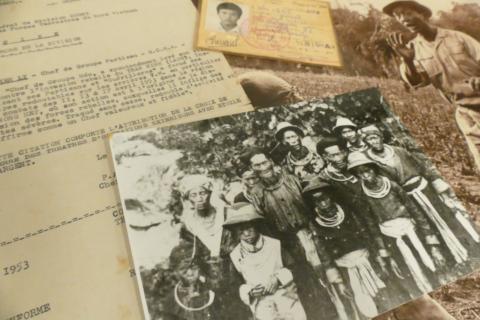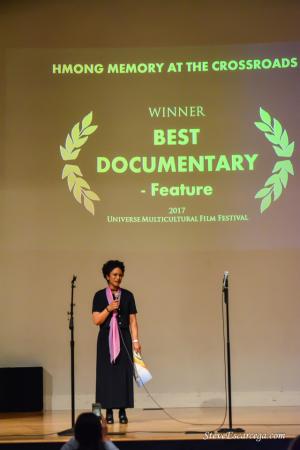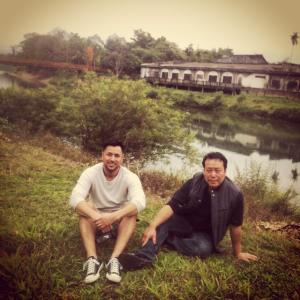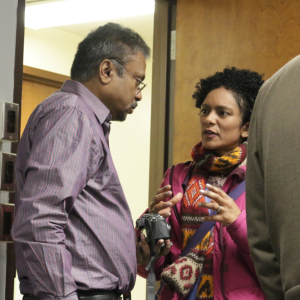Research in Retrospect: Hmong Memory at the Crossroads
Multi-vocal storytelling reflects complexity of history

The travail de mémoire or “memory work” surrounding the Hmong people and their history during and after the French colonial conflicts in Southeast Asia still remains to be done, according to Chantal Brunel, former member of the French National Assembly. But how best to uncover and share these untold stories?
Safoi Babana-Hampton, two-time Humanities Without Walls (HWW) Grand Research Challenge recipient and professor of French and Francophone Studies at Michigan State University, set out to do this memory work transnationally across Hmong communities in France, the American Midwest, and around the world. The resulting work not only enriches understanding of the Hmong diaspora, but also reflects the methodologies HWW has come to embrace—reciprocity and redistribution, a breaking down of the walls between knowledge held within academic institutions and community-based knowledge.

In the documentaries Hmong Memory at the Crossroads (2015) and Growing Up Hmong at the Crossroads (2017), Senior Principal Investigator Babana-Hampton reexamined the history and legacy of French colonialism through the multi-lensed perspective of families within the Hmong diaspora. Banana-Hampton and the project team worked collaboratively with Hmong diasporic communities to produce multi-vocal storytelling that reflects the complexity of history and of refugee experiences.
While academic experts play an important role in the films, it is the individuals among the Hmong diaspora that are the ultimate knowledge-keepers and storytellers. One such voice in the films is Cedric Lee, the son of a Hmong refugee father and assistant director of Hmong Memory at the Crossroads, who narrates, guides, and gives voice to the multi-perspective, multi-generational stories in both documentaries. In Babana-Hampton’s hands, Hmong perspectives, like that of the Lee family, are front and center, allowing for a reexamination of the historical narrative from a point of view that is rarely amplified.

In an interview with HWW at the time of the first film’s release, Babana-Hampton explains, “At its core, the film is a meditation on the ethics of understanding and knowing our world and our histories from a lens that privileges complexity, multiplicity of perspectives, cross-disciplinary, comparative and transnational approaches as modes of critical and creative inquiry into the global legacy of French colonialism and armed conflicts such as the American Vietnam War.”

Swarnavel Eswaran Pillai in conversation
Both documentaries present moments of lively family gatherings and conversation, but often, it is a visual meditation, filled with quiet moments of reflection, gazing at monuments to Hmong family members who served in the French or American militaries or a solemn return to an old familial home that, decades ago, had to be left behind. Such stories are local, specific, and deeply personal to the communities belonging to the Hmong diaspora. And yet these experiences and narratives are simultaneously universal to the experiences of refugees and displaced persons in a global environment in which, according to the United Nations, “We are now witnessing the highest levels of displacement on record.”
Antoinette Burton, director of the Humanities Research Institute, said, “When the films first came out, it was common enough to read about transnational migration stories, but it was rarer to be able to visualize mobility across the generations the way that Professor Babana-Hampton and her colleagues were able to capture.”
She added, “Today, when migrants’ experiences continue to shape our global present, it’s still comparatively unusual to have such intimate glimpses into individual and family stories, let alone to be able to see so clearly the multi-sited journey (Laos, France, and the U.S. Midwest) that they’ve recorded with such thoughtfulness and care.” Speaking to the ongoing legacy of the films, Burton assessed, “Taken together, these films are archives of and primers for 20th- and 21st-century world history, especially when it comes to understanding the long-term impact of war on communities in diaspora now.”
By Heather Ennis